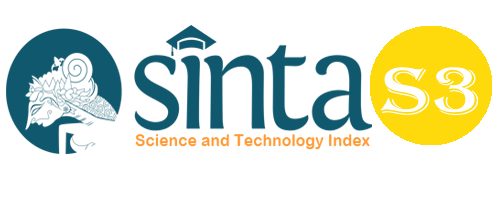Double Reed Instruments in Indonesia
Abstract
In Indonesia various types of conical double reed instruments can be found across Sumatra mainly from the Northern part of Sumatra through Palembang in the South and on Java. This paper is a preliminary survey of conical double reed instruments in Indonesia. It aims to explore issues related to the origin and historical dissemination of these instruments in this region over different time periods and also the outside influences that have impacted the music cultures of this area. The paper will also discuss in general various types of reed instruments in the region, including their organological characteristics and the corresponding musical terminologies. This paper will also discuss in general various performance contexts and functions of the conical double reed instruments, including religious ceremonies, life/cycle rituals (weddings and funerals), and court ceremonial ensembles, among others.
Keywords
Full Text:
PDFReferences
Dick, Alastair (March,1984), “The Earlier History of the Shawm in India”, in The Galpin Society Journal, Vol. 37 , pp. 80-98, Galpin Society Stable.
Dournon, Genevieve.(1992) Organology. In Helen Meyers (Ed.); Ethnomusicology: An Introduction W.W. Norton and Company, New York-London.
Jairazbhoy, Nazir A. (Sep., 1970), “A Preliminary Survey of the Oboe in India” in Ethnomusicology, Vol. 14, No. 3, pp. 375-388, University of Illinois Press on behalf of Society for Ethnomusicology.
Jairazbhoy, Nazir A. (Jan., 1980), “The South Asian Double-Reed Aerophone Reconsidered” in Ethnomusicology, Vol. 24, No. 1, pp. 147-156, University of Illinois Press on behalf of Society for Ethnomusicology.
Jansen, Arlin Dietrich (2003) Gonrang Simalungun: Struktur dan Fungsinya dalam Masyarakat Simalungun. Published by: Bina Media, Medan.
Kartomi, Margareth J. (March 1997) “The Royal Nobat Ensemble of Indragiri in Riau, Sumatra, in Colonial and Post-Colonial Times” in The Galpin Society Journal, Vol. 50 pp. 3-15 Galpin Society Stable .
Kunst, Jaap (1973) Music In Java: Its History, Its Theory and Its Technique. The Hague Martinus Nijhoff.
Kunst, Jaap (1994) Indonesian Music and Dance: Traditional Music and Its Interaction With the West. Royal Tropical Institute/Tropen Museum. University of Amsterdam/ Ethnomusicology Centre ‘Jaap Kunst’ Amsterdam.
Martozet and Nurwani. (2019). Sentimental Values in Tor-Tor Parsiarabu in Tomok Toba Samosir Village. Budapest International Research and Critics Institute-Journal (BIRCI-Journal) Vol 2 (4): 167-171.
Martozet, Nurwani, and Togatorop, M.R.S. (2021). Si Gale-Gale Folklore in the Toba Batak Society: A Study of Continuity and Change. Budapest International Research and Critics Institute-Journal (BIRCI-Journal) Vol 4 (3): 5846-5852.
Matusky, Patricia and Tan Sooi Beng. (2004) The Music of Malaysia: The Classical, Folk and Syncretic Traditions. ASHGATE: SOAS Musicological Series.
Napitu, U., Corry, and Supsiloani. (2020). Tural phenomenon of Monument Building in Batak Toba People Life in Pangururan District and Palipi District Samosir. Budapest International Research and Critics Institute-Journal (BIRCI-Journal) Vol 3 (2): 1185-1197.
Simon, Artur (1985) “The Terminology of Batak Musical Instrumental Music in North Sumatra”, in Yearbook for Traditional Music, Vol 17 pp. 113-145. International Council for Traditional Music.
Yampolsky, Philip. Indonesia (1996) “Music of Indonesia 11: Melayu Music of Sumatra and the Riau Islands.” (Record Notes) Smithsonian Folkways, Washington DC.
DOI: https://doi.org/10.33258/birci.v5i1.3974
Article Metrics
Abstract view : 73 timesPDF - 66 times
Refbacks
- There are currently no refbacks.

This work is licensed under a Creative Commons Attribution-ShareAlike 4.0 International License.

This work is licensed under a Creative Commons Attribution-ShareAlike 4.0 International License.

_.gif)

















_.gif)



